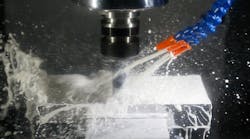The global supply chain has been under strain for more than two years, with temporary factory closures in 2020 now cascading into historic shipping delays. At the onset of the coronavirus pandemic, suspended manufacturing operations made many supplies completely unavailable, while consumer demand grew at an unprecedented rate.
Although production is returning to (and even surpassing) pre-pandemic levels, lack of labor is causing bottlenecks at seaports, with shipments left in limbo at docks for weeks or even months. At the same time, the Wall Street Journal reports that shipping costs from China have increased more than 72% compared to numbers from 2019. In fact, Q3 2021 data from the Federal Reserve indicates container shipping prices are more than 50% above the long-term trend.
Economists don’t expect these issues to smooth out until at least 2023.
Supply-chain disruptions are causing issues including fluctuating material costs, unreliable revenue projections, difficulty meeting production deadlines, and a general environment of uncertainty. Manufacturers in every sector are rethinking the viability of international sourcing and even just-in-time manufacturing.
As a result, many companies are considering reshoring as much of their operations as possible, converting to local suppliers, investing more heavily in automation, additive manufacturing, and doing everything they can to create a more resilient supply chain. For companies in the metalworking sectors, cutting-fluid management can play a pivotal role in achieving this resiliency.
Importance of cutting-fluid management
Because cutting fluid touches every aspect of the production process, from the cutting tools to the workpieces, to even the workers themselves, it is extremely important to select the proper coolant and maintain it properly.
Cutting-fluid management is a set of recommended practices designed to help manufacturers maintain the proper concentration in the sump, optimize performance, and minimize waste and environmental impact. This is done with the aid of various cleaning equipment, such as recycling systems, sump suckers, centrifuges, skimmers, and other filtration techniques that remove contaminants from the fluid.
Proper coolant management prevents waste by extending coolant life through removing chips, tramp oil, and other debris that can harbor bacteria. Additionally, dirty coolant doesn’t perform as well as fresh and well-maintained fluid, which can reduce part finish quality, tool life, and other critical KPI components related to operating costs.
Plus, poorly maintained coolant may even contribute to rust and corrosion issues, operator health concerns and air-quality issues. Manufacturers will be forced to clean machines more frequently, increasing downtime and disposal costs.
Mitigating supply chain uncertainty
On manufacturers’ operating budgets, cutting fluid is a relatively small cost with a big impact. Coolant plays such an important role, directly impacting every aspect of production. Simple cutting fluid management goes a long way to alleviate some of the uncertainty manufacturers face today. Here’s how:
Avoid shipping congestion. Logistics are besieged by unprecedented bottlenecks and delays, and long lead-times could be catastrophic for manufacturers. Every time supplies are reordered, customers face the risk of not receiving the product in time. This can stall, if not completely shut down operations.
Coolant conservation decreases order frequency so there’s less chance of encountering delays. Lower order volume also drastically cuts supply costs throughout the year.
Maximize throughput. Properly maintained, quality cutting fluid doesn’t just minimize waste; it improves production efficiency. Healthy coolant held within the recommended parameters allows for maximum sump and tool performance life. This reduces unplanned machine downtime and allows operators to focus on production. It also allows tooling to be run at maximum speeds and feeds while providing optimum tool life.
Anchor unpredictable budgets. The root concern of supply-chain uncertainty is unpredictable costs and lead times. Maintaining coolant can reduce manufacturers’ spend on consumables and reduce post processing time.
Greater efficiency also can control unwieldy labor costs by improving workforce efficiency. Proper cutting-fluid management can be an unexpected area where manufacturers make up for lost profits.
Manufacturers creating a resilient supply chain is the key to successfully navigating 2022 and beyond. While there is so much that’s seemingly left to chance in the marketplace, manufacturers do have control over what happens in their shops. Caring for metalworking fluid and maximizing its efficiency is the easiest and most attainable way to control costs. Cutting-fluid management can be a life preserver in these seas of industry change.
Justin Geach is the Global OEM / Business Development Manager at Master Fluid Solutions. Contact him through LinkedIn.






